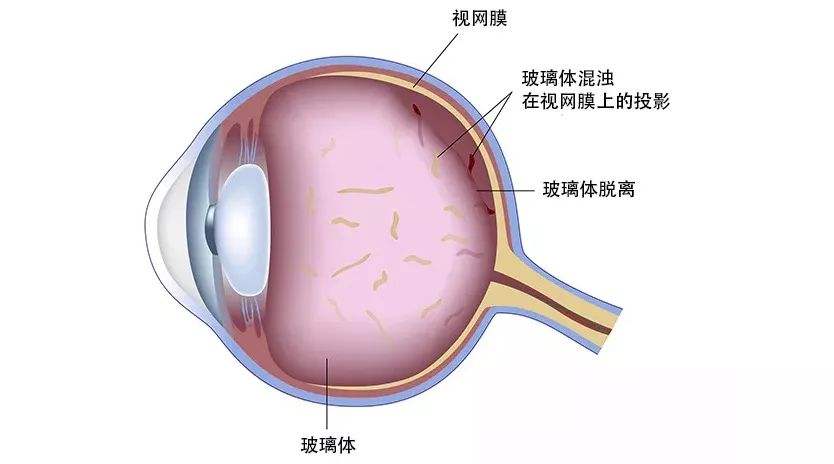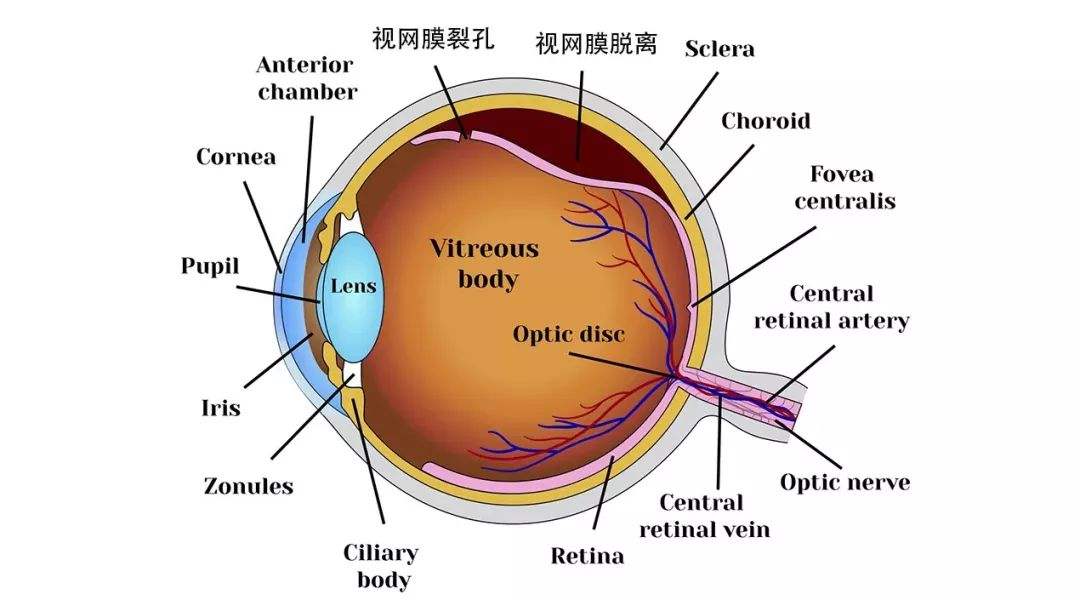In the past, we always said that as we get older, our eyes will appear how bad it is. For example, a dark shadow suddenly appears in front of us. However, watching the first batch of post-90s generation begin to bald, so we can no longer talk about age…….
It’s like you don’t know that leaves will turn yellow in what, babies will grow their first teeth, you will fall in love with a person, and you don’t know that black shadows will suddenly appear in front of you in what.
Is this mosquito-like thing flying in front of us what? No matter what it says, will it be blind?
Why do floaters appear in front of us,
Floaters are actually a manifestation of turbidity in the vitreous body of the eye.
Vitreous body, which normally appears as a transparent gel, is located between the lens and retina and is the largest tissue in the eye, accounting for about 4/5 of the volume of the eye.
Vitreous body supports eyeball and conducts light. It is mainly composed of collagen fibers and water molecules.

For some reasons, the water and collagen fibers in vitreous body will gradually separate, resulting in some uneven liquid or turbidity.
At this time, the light enters the eye, and the shadow of the turbidity will be projected onto the retina, forming the floaters we see.
Is floaters serious
It depends on which one it is. Generally speaking, floaters can be divided into physiological and pathological diseases.
1. Physiological floaters
Generally, it has nothing to do with it. It is more common in the middle-aged and elderly people and high myopia.
It is more common for the middle-aged and the elderly, because with the growth of age, the water and collagen fibers in vitreous body will gradually separate, which is prone to uneven distribution of lumps or liquids, resulting in dark shadows in front of them.
In patients with high myopia, the anterior and posterior diameters become longer and the vitreous body deforms due to the change of eyeball morphology.
There are also some teenagers who feel that there is always a dark shadow flying in front of them, mainly because there are blood vessels in the vitreous body of the embryonic period when people are not yet born. Under normal circumstances, blood vessels will slowly disappear after birth, but there are also some remnants, so they will also feel that there is a dark shadow floating in front of them.

The above-mentioned conditions all belong to physiological floaters and do not need treatment. At present, there is no particularly good method.
Oral administration of some iodine-containing drugs or eating some iodine-rich foods may help the metabolism of these impurities in the vitreous body, but it is not necessarily effective.
Therefore, you can try to get used to these shadows, don’t pay too much attention to them, perhaps you will get used to them slowly.
2. Pathological floaters
It is usually caused by pathological changes in the tissues around the vitreous body, which is relatively complicated.
For example, diabetes, hypertension and eye trauma may cause fundus hemorrhage, and blood entering the vitreous body will cause turbidity. Uveitis is also the case. When inflammation occurs, white blood cells and exudates will also enter the vitreous body to cause turbidity.
Pathological floaters usually need to be treated in combination with primary diseases.
Can floaters cause blindness
Pathological floaters may cause blindness due to the existence of primary diseases, so timely treatment should be carried out for primary diseases.
Usually physiological floaters are unlikely to cause blindness, so you don’t have to worry too much, but if the shadow in front of you suddenly becomes very large, you should be careful, retinal detachment may occur.

Retina is a transparent film inside the eyeball, with very fine structure and rich metabolic and physiological functions.
Although it is very thin, its structure is complex. It can be divided into 10 layers from outside to inside, which can be simply divided into neuroepithelium and pigment epithelium. There is a potential gap between these two layers, which is easy to separate and causes retinal detachment.
The early stage of retinal detachment is characterized by dark shadow, flash or occlusion in front of eyes. With the expansion of detachment range, vision will obviously decline, which may eventually lead to blindness.
Patients with high myopia, because the eyeball is long, the eyeball wall and retina will be thinner than the average person, and retinal detachment is more likely to occur. Therefore, if the shadow in front of you appears to increase significantly, you must be careful whether retinal detachment occurs and you must see a doctor in time.
References:
[1] Wang NK, Chen YP, Lai CC, et al. Paediatric retinal detection: comparison of high myopia and extreme myopia. Br J Ophthalmol 2009, 93 (5): 650-5.
